Propeller Collision Tests
Project Summary
Motivation
While it’s rarely intentional, sometimes drones collide with infrastructure. These momentary or sustained propeller collisions could damage utility assets. There are likely several variables related to understanding this event. These may include the propeller material, size, torque, angle of attack, asset material, duration, position, etc. To investigate the possible outcomes of this type of impact, while controlling many of these variables, EPRI built a test rig to systematically collide a drone into overhead assets.
Test Setup
In these experiments, a Skydio S2 motor and propeller were powered to match high-speed cruising RPM, 9550.

We tested two scenarios: a “worst case” scenario, where the propeller slowly made contact with the object, and an “impact collision” case designed to replicate a propeller bumping into an object. While the “worst case” scenario is unlikely to be recreated by an actual drone in flight, the test is intended to show the most severe damage this propeller could possibly cause to a given asset. The “impact collision” scenario is designed to more closely replicate a real collision.
“Worst case” slow collision
Impact collision
Objects Tested
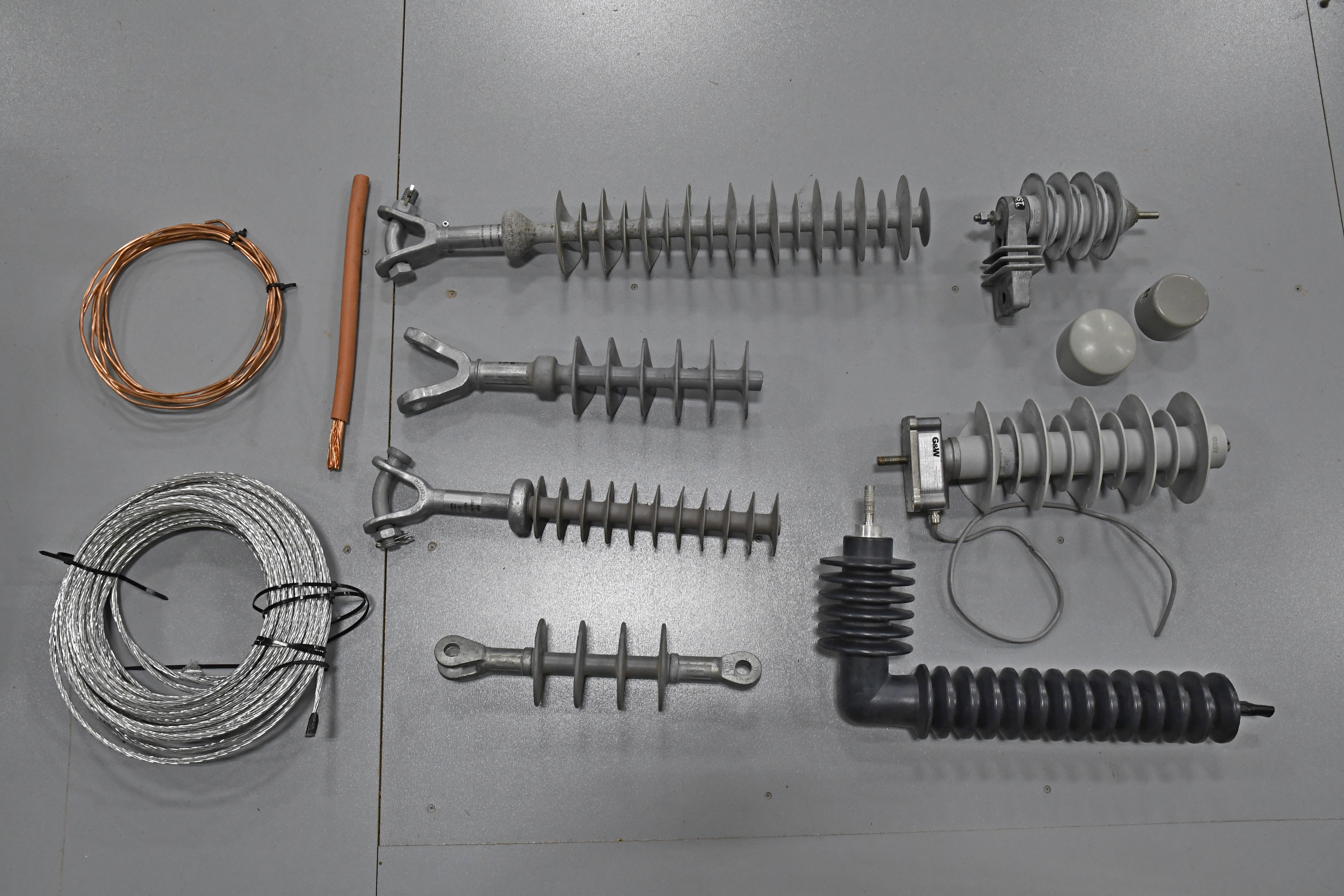
|
EPRI tested a total of 13 different overhead assets:
|
Results
Learning 1: Sensor cables performed the worst.
The voltage sensor cable sustained the most damage of all the objects tested. The worst case scenario cut through several layers of the cable, while the impact collision exposed the wire’s shielding. Results show that sensor wire or other thin rubber coated wires are suseptable to damage from this propeller strike.
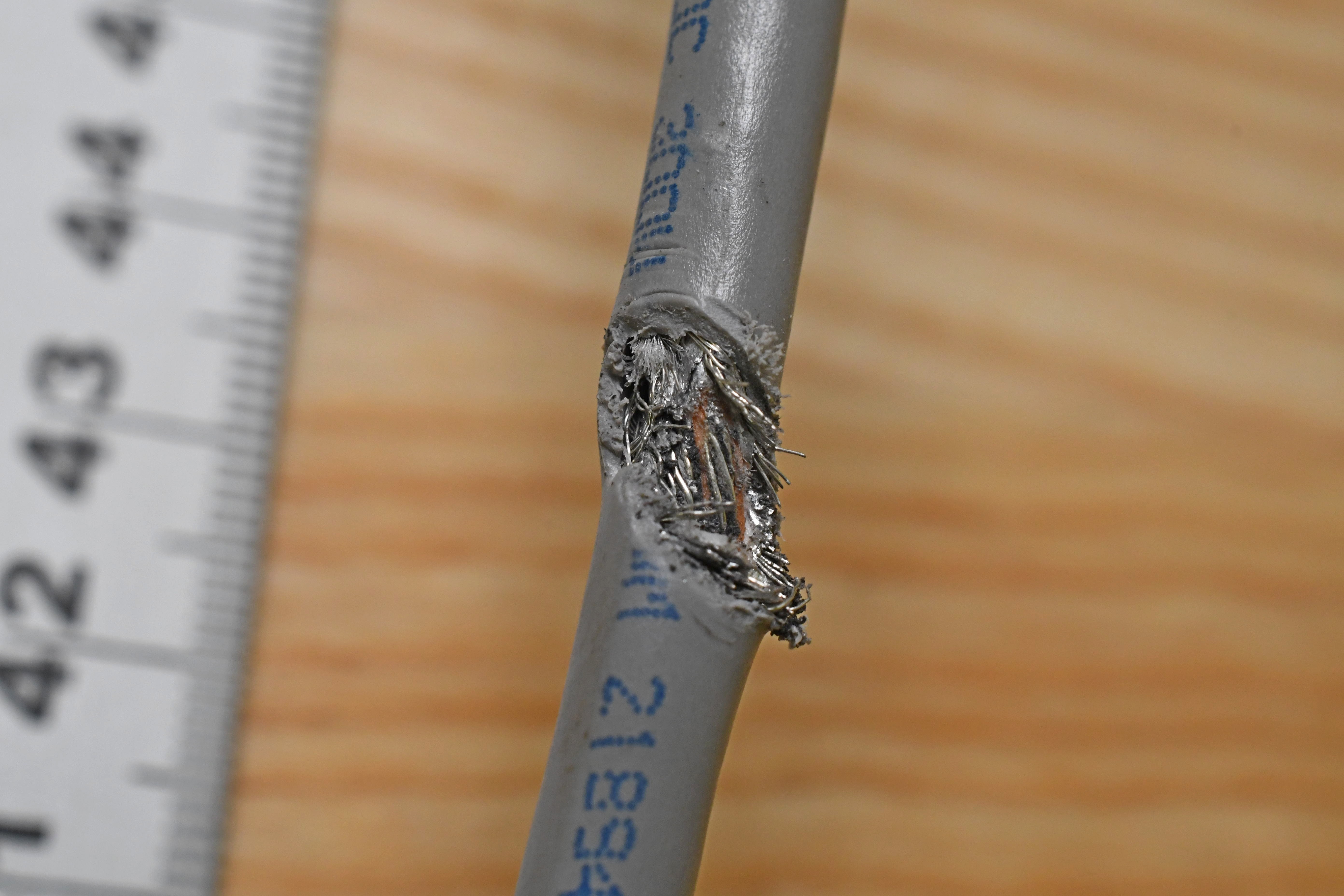
Slow collision
|
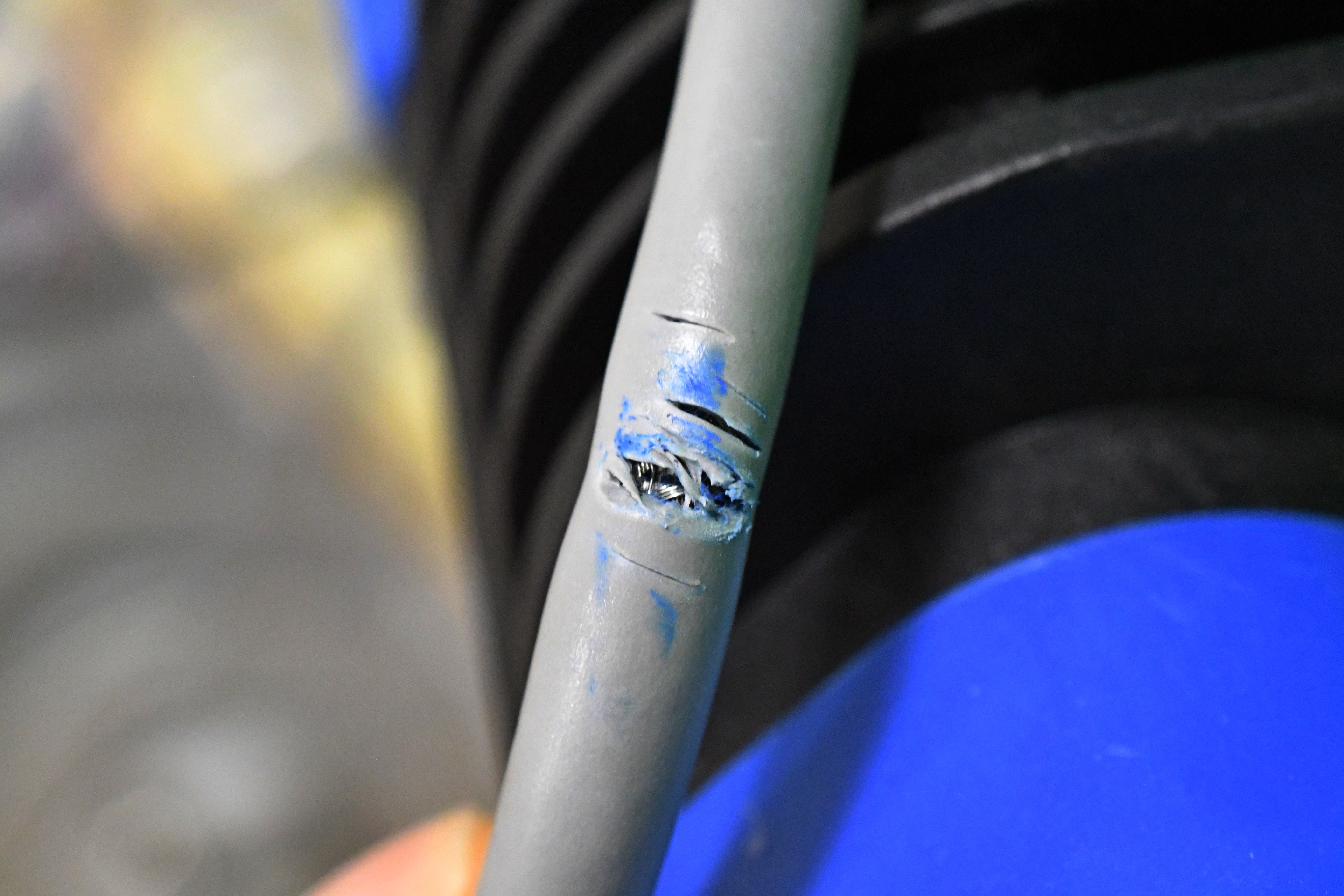
Impact collision
|
Learning 2: Conductor impact was minimal.
The ACSR #4 and solid copper #6 conductors sustained the least damage. The impact locations are indicated by the blue markings left by propeller tip; abrasions to the conductor’s surface are negligible, even after the worst-case scenario test.
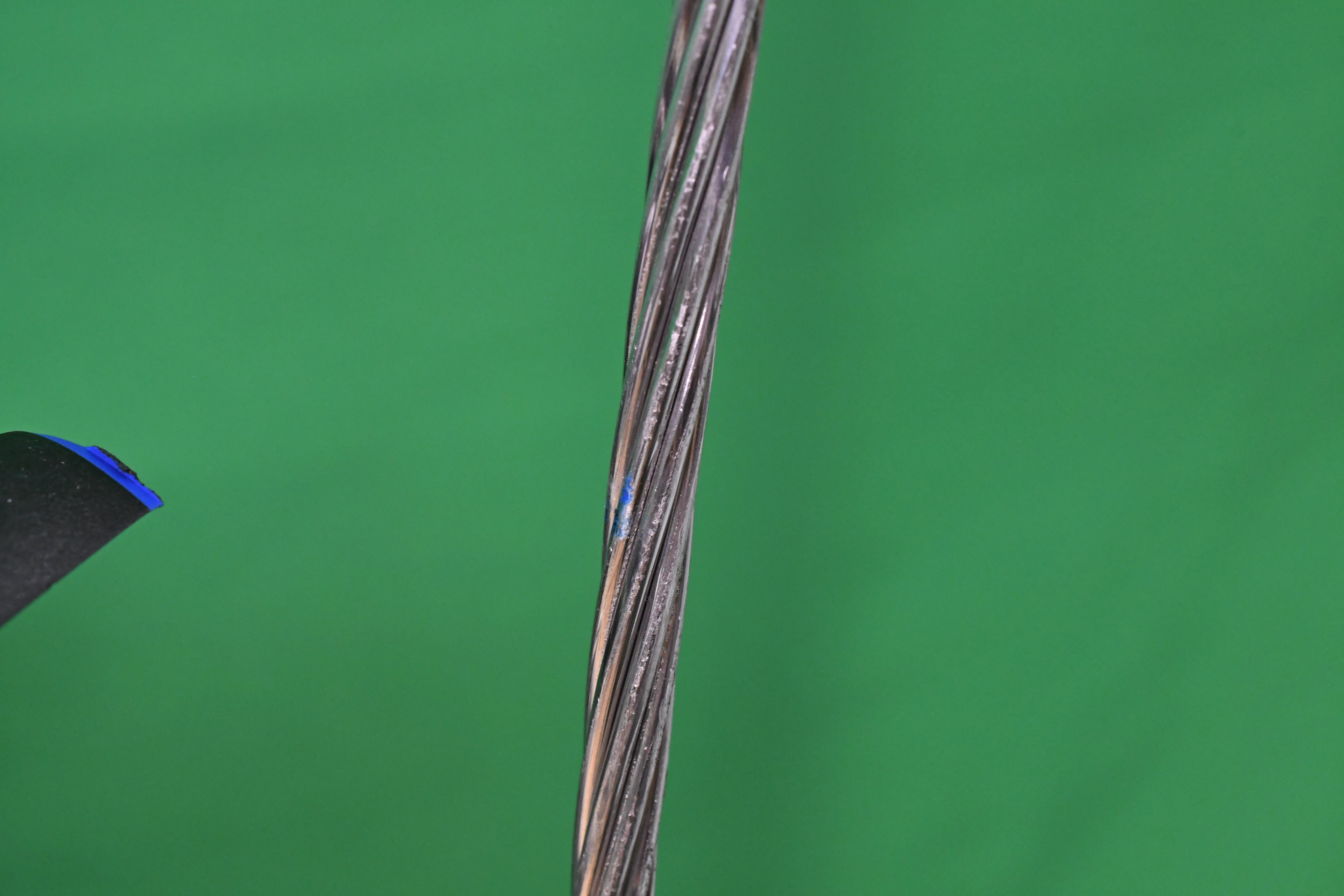
Damage to ACSR conductor
|

Damage to solid copper conductor
|
Learning 3: Check the propeller!
The propeller tip was sometimes damaged, even if the overhead asset wasn’t. The impact collision with the ACSR conductor took a bite out of the propeller tip, while some of the slower collisions shaved a signinficant amount off of the propeller’s length. These impacts often left debris around the test area.
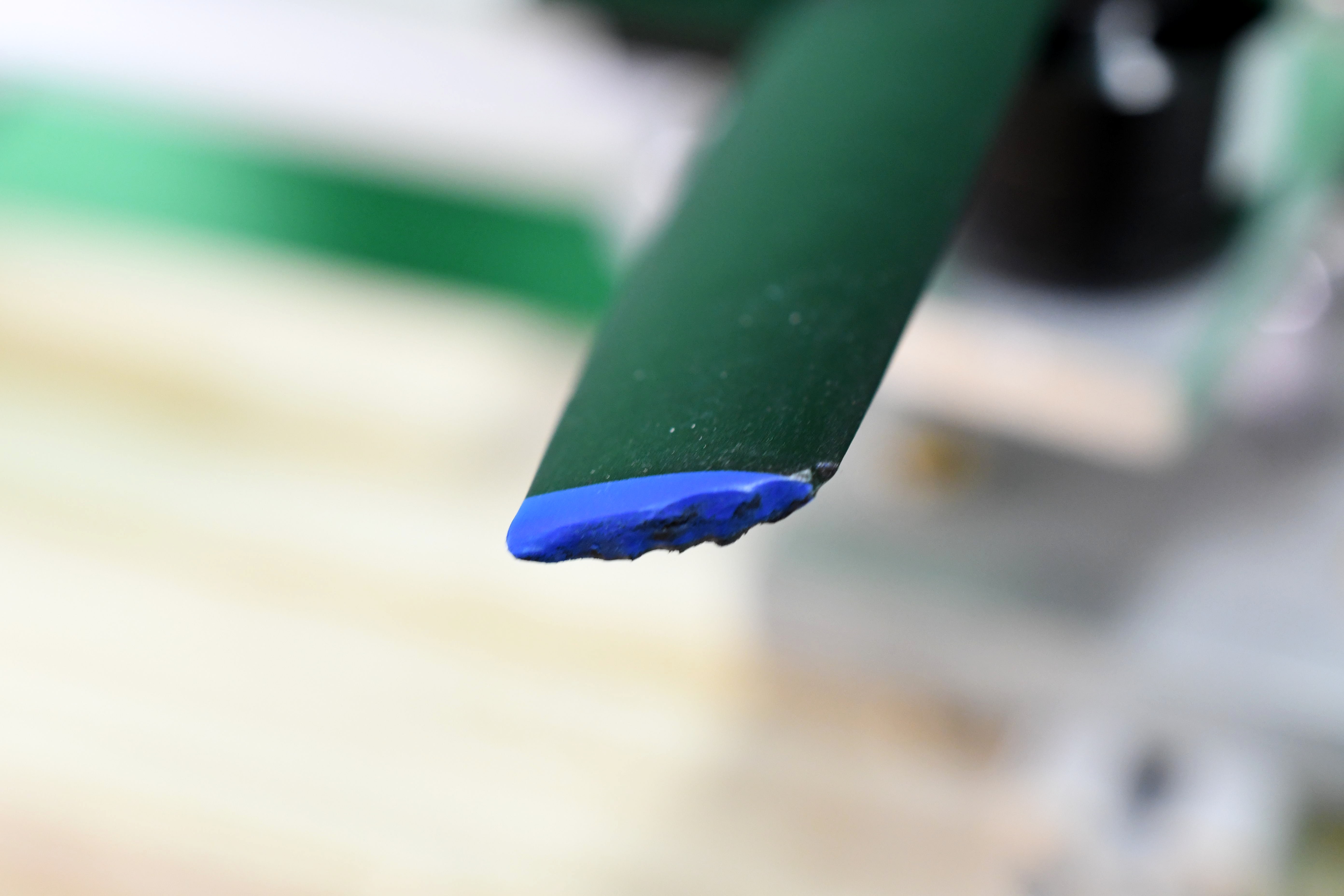
Propeller damage after slow collision with a jumper cable
|
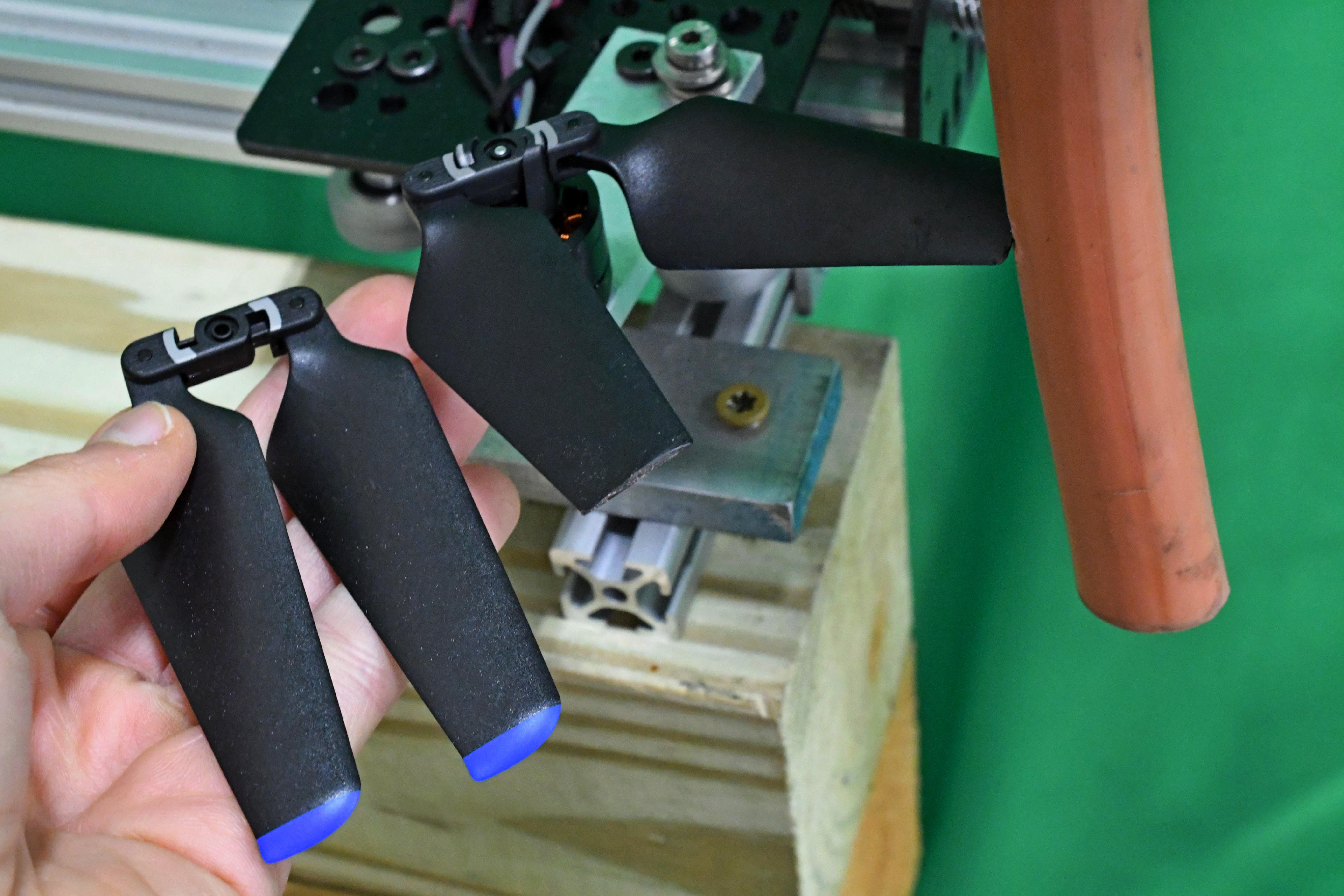
Propeller damage after impact collision with ACSR conductor
|

Debris from the impact
|
Learning 4: The propeller can cut insulator sheds.
Collisions with insulators were aimed at the sheds since they are prone to tearing. The propeller cut the insulator shed in all the worst case collisions and two of the impact collisions.
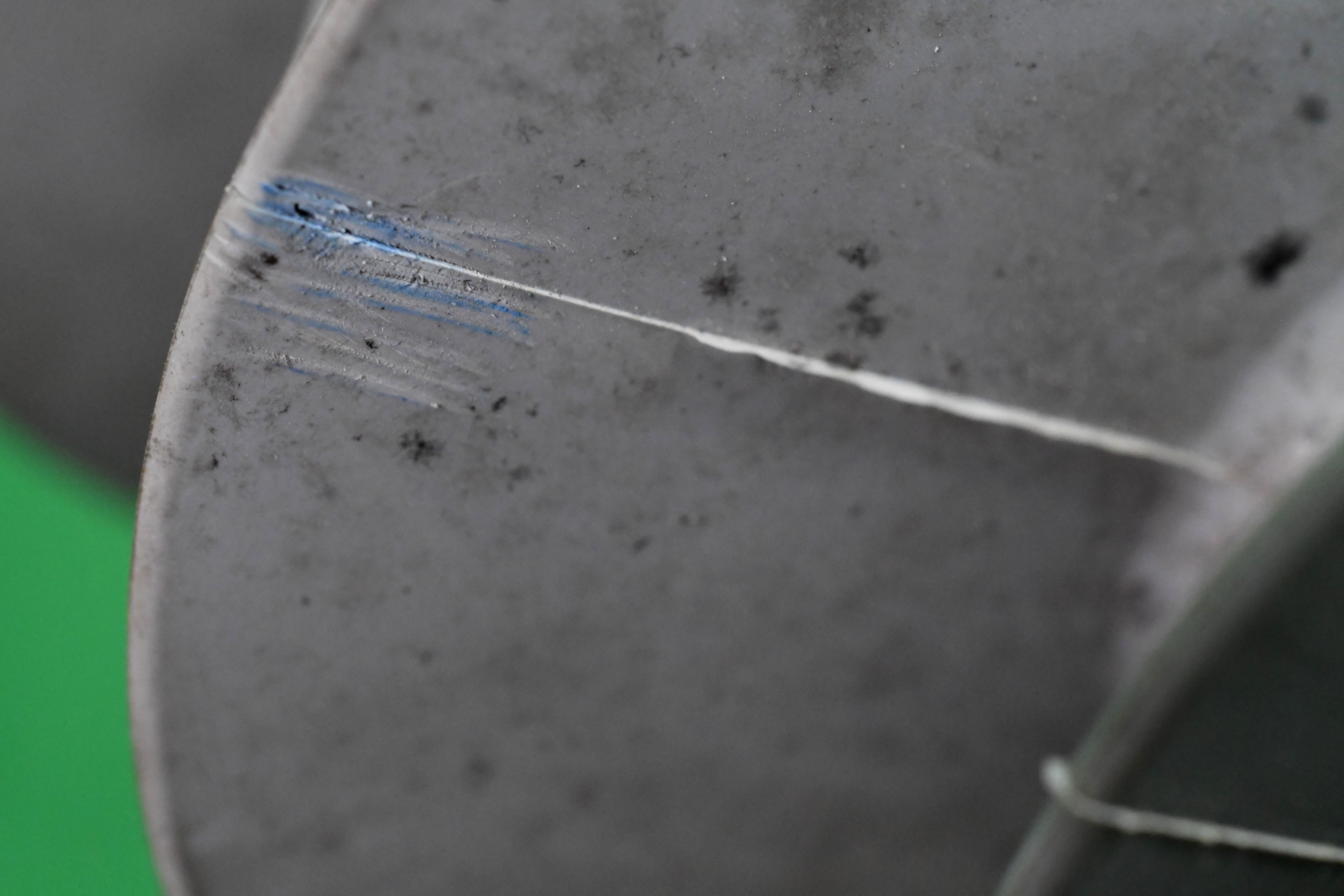
|

|
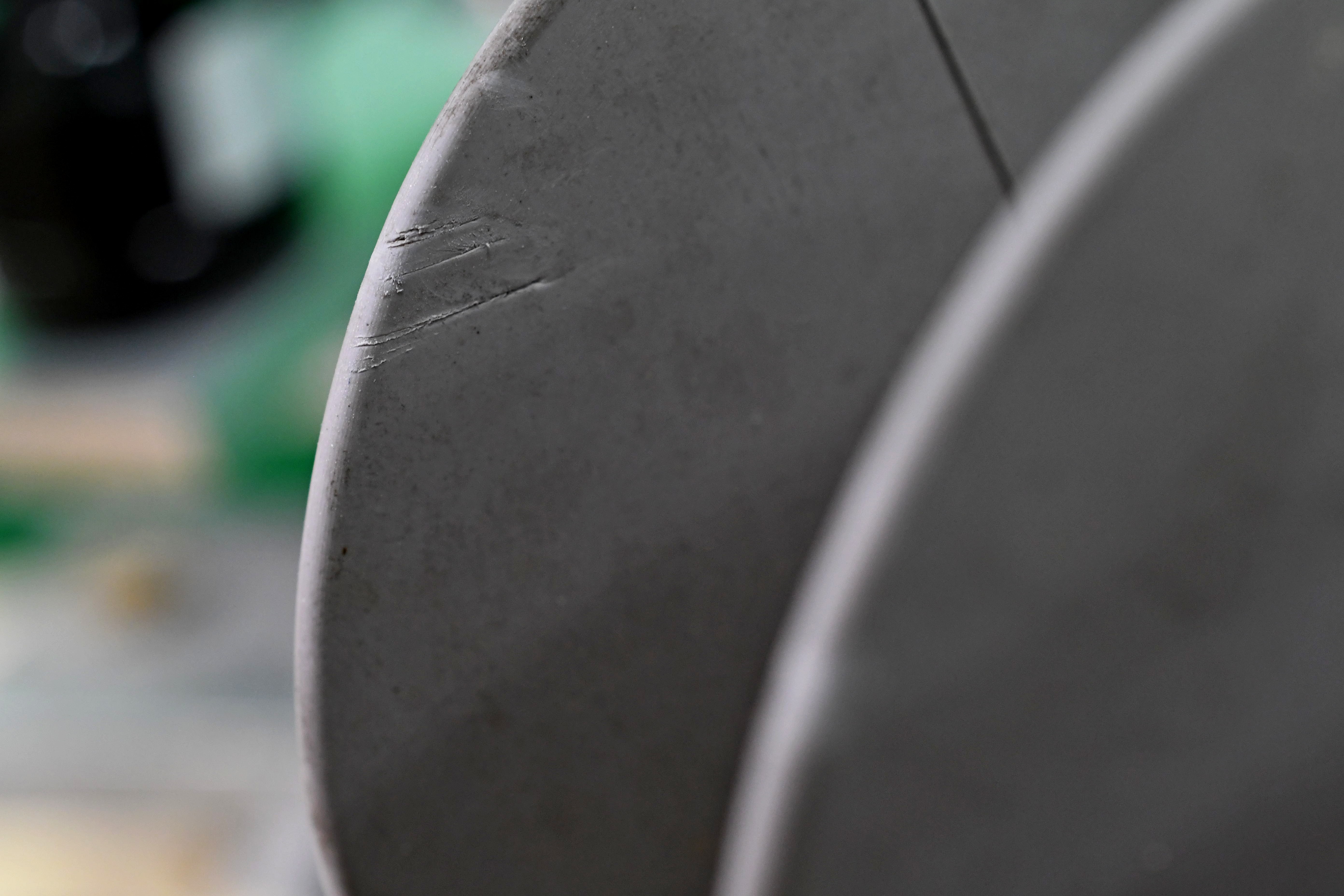
|
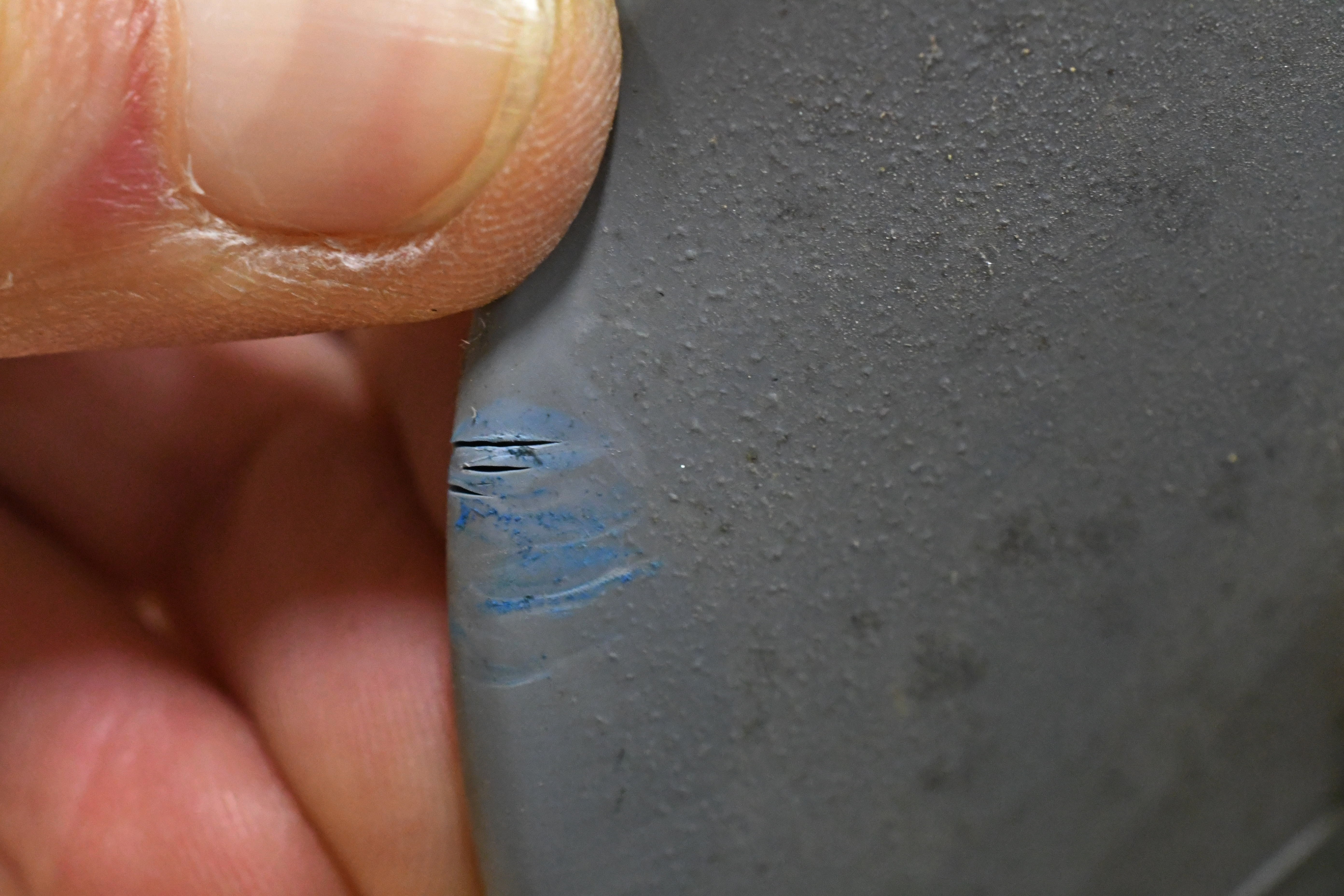
|

|
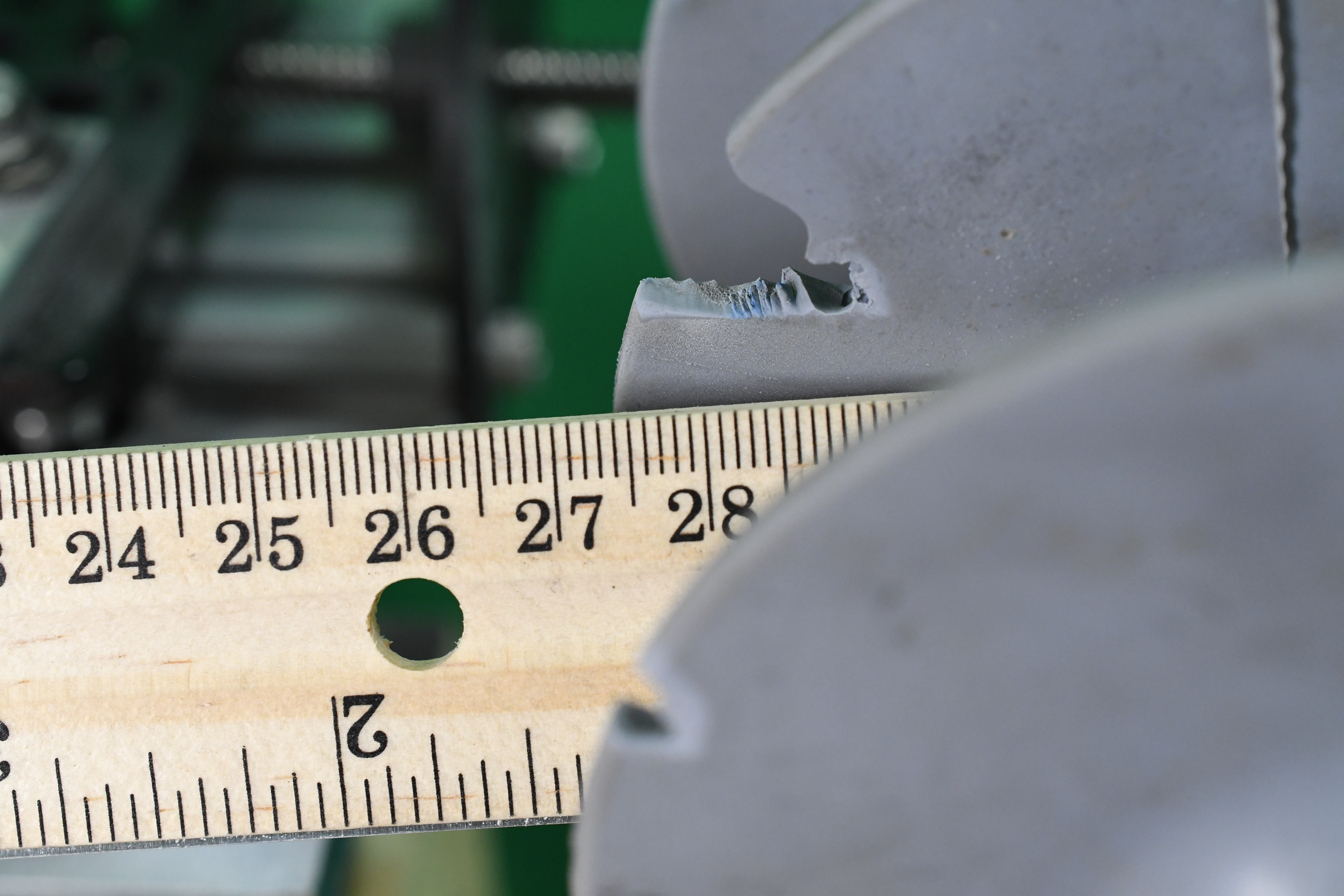
|
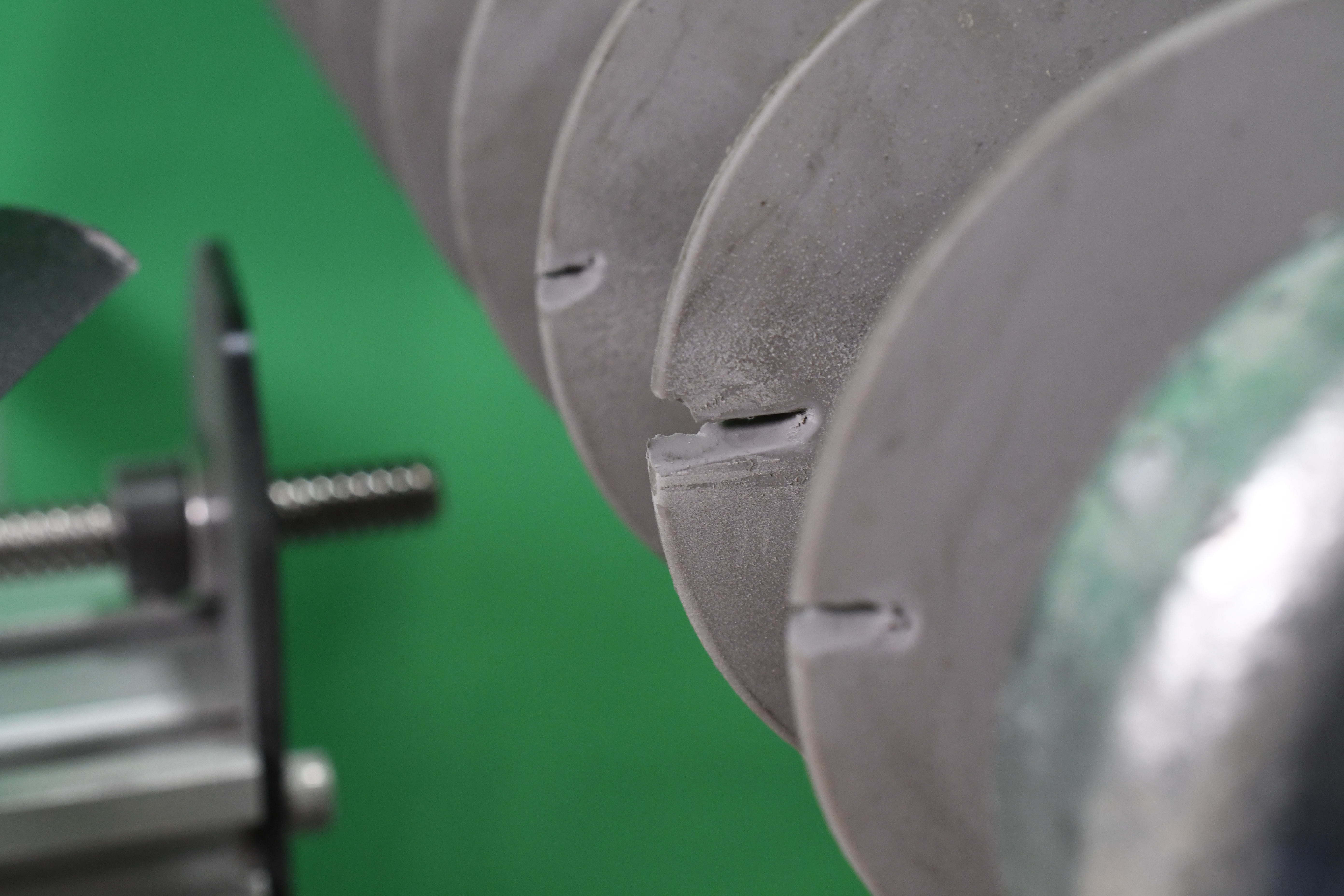
|

|
Top: damage from the imapact collisions. Bottom: damage from the worst case collisions
Learning 5: The propeller broke the surface of the polymer of the arrester and voltage sensors
Collisions with these objects were aimed at their core, where damage has a higher liklihood of impacting the asset’s function. The propeller knicked the polymer of the arrester and one of the voltage sensors. The geometry of the second voltage sensor’s sheds prevented the propeller from hitting the center of the sensor.
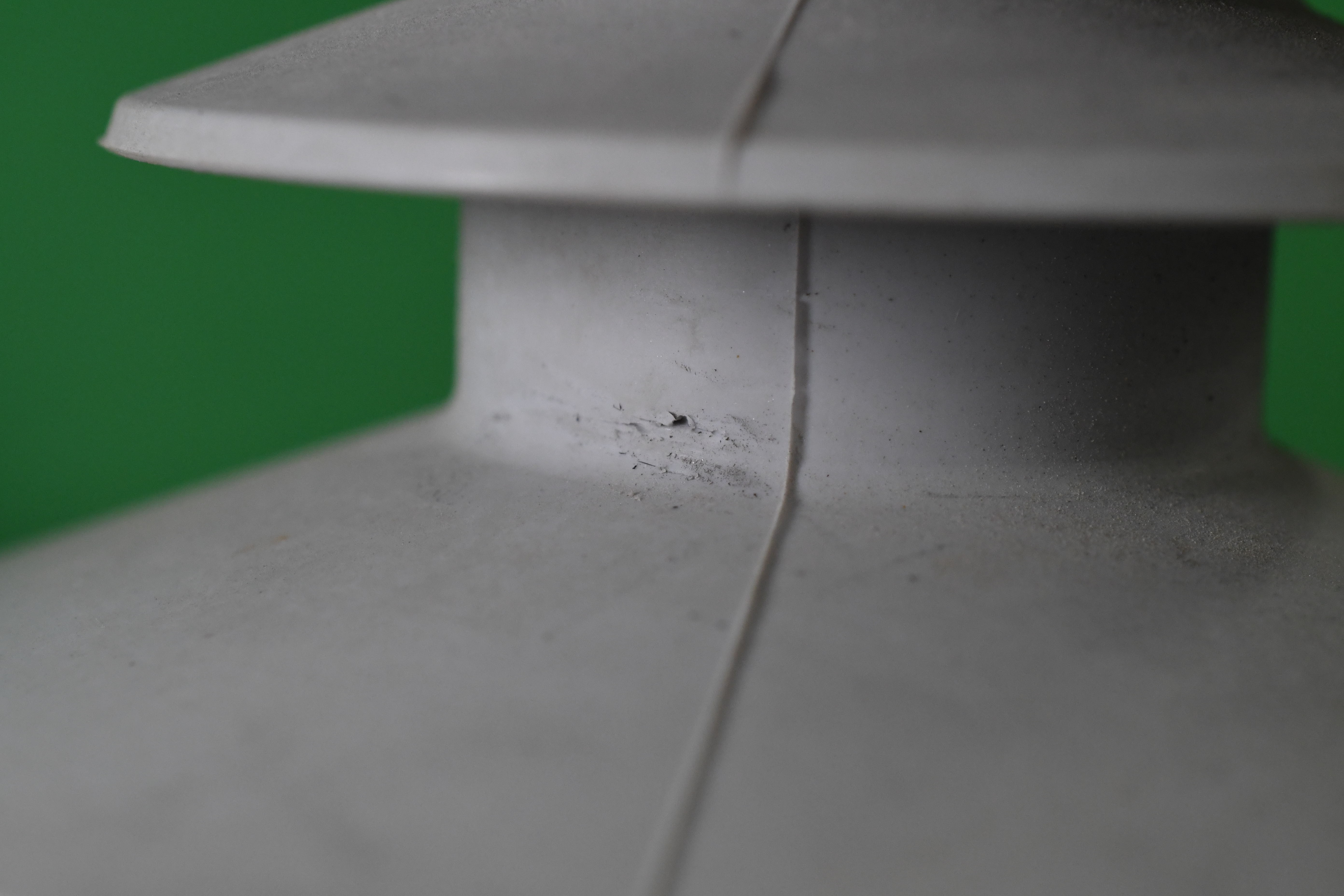
|
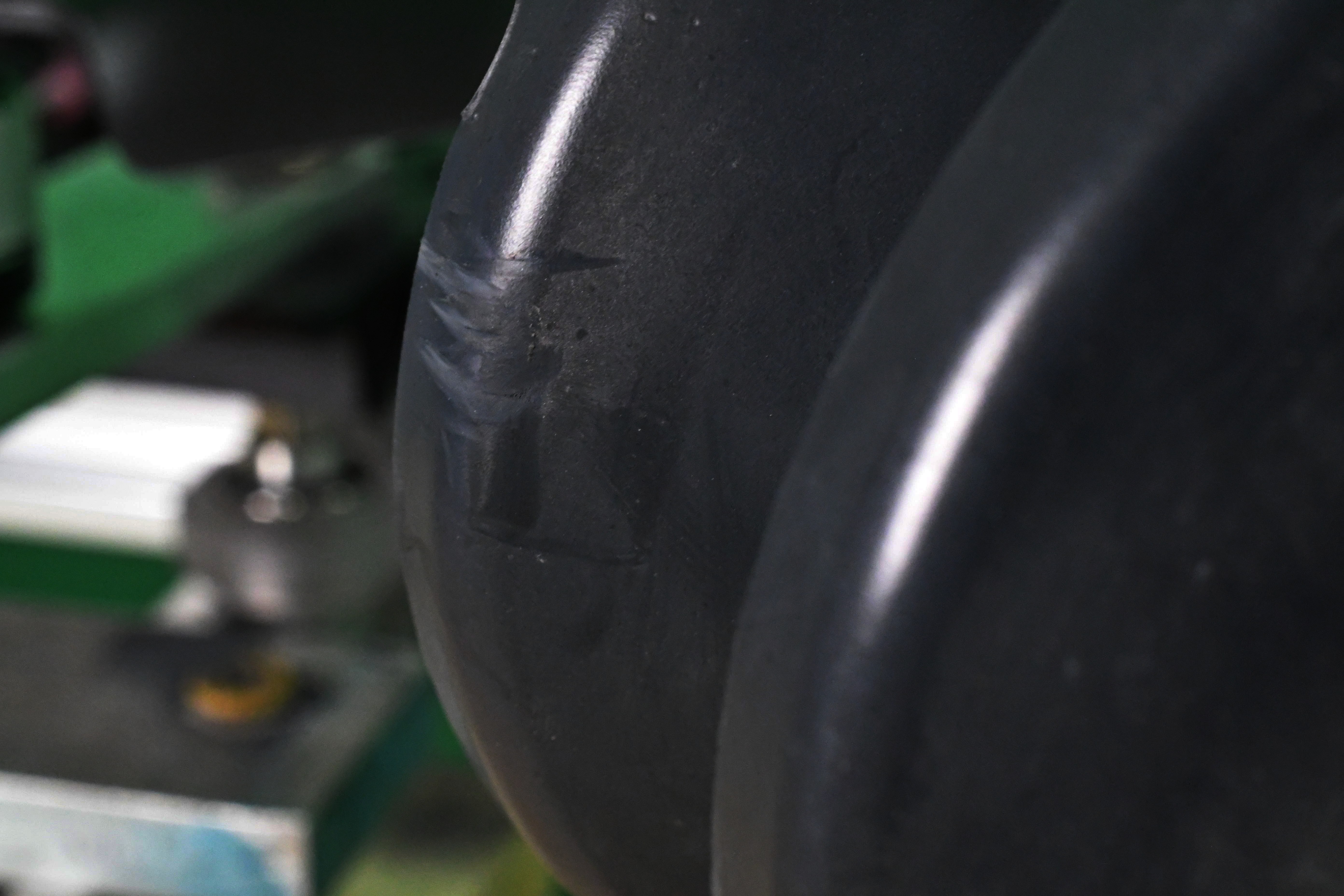
|
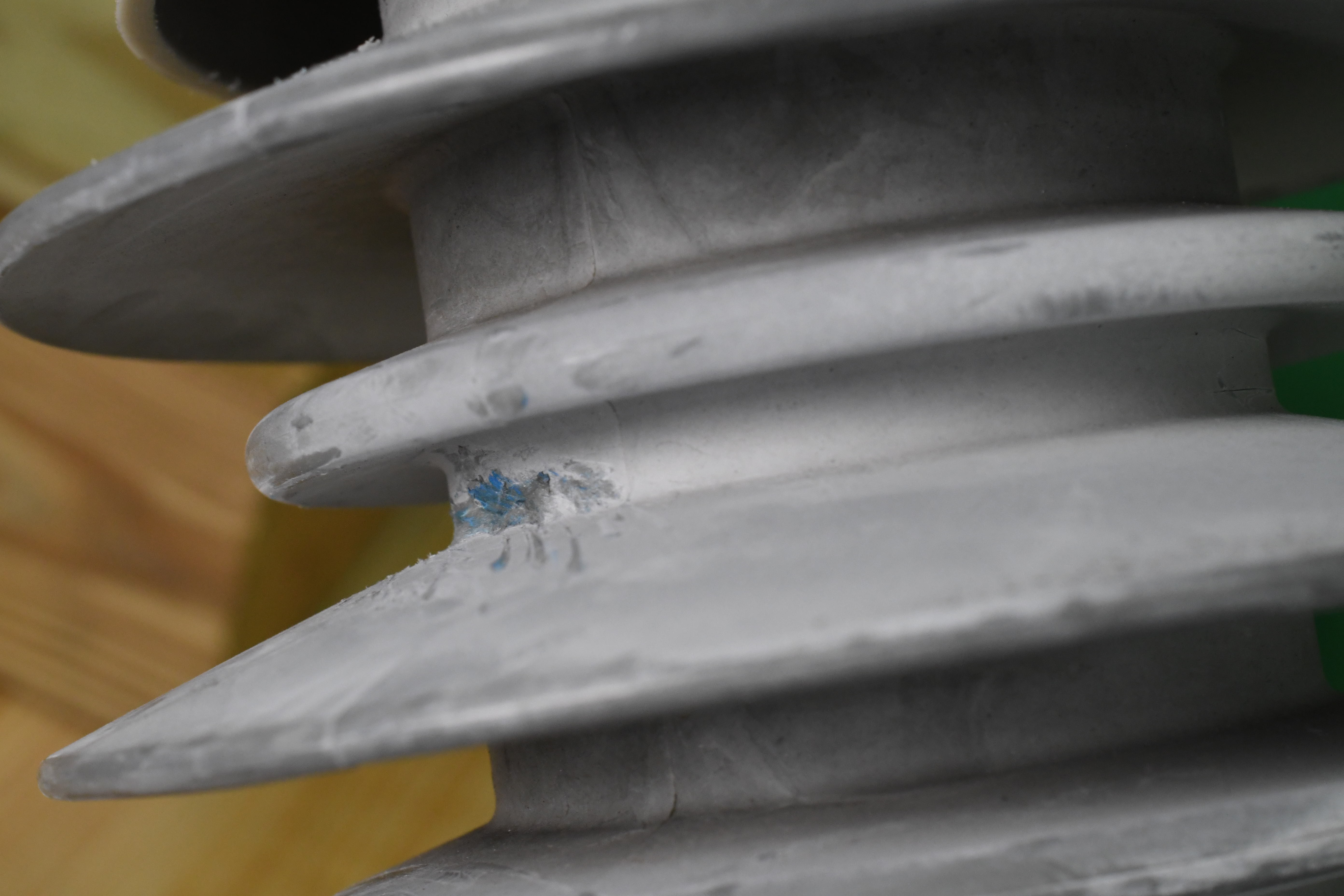
|

|
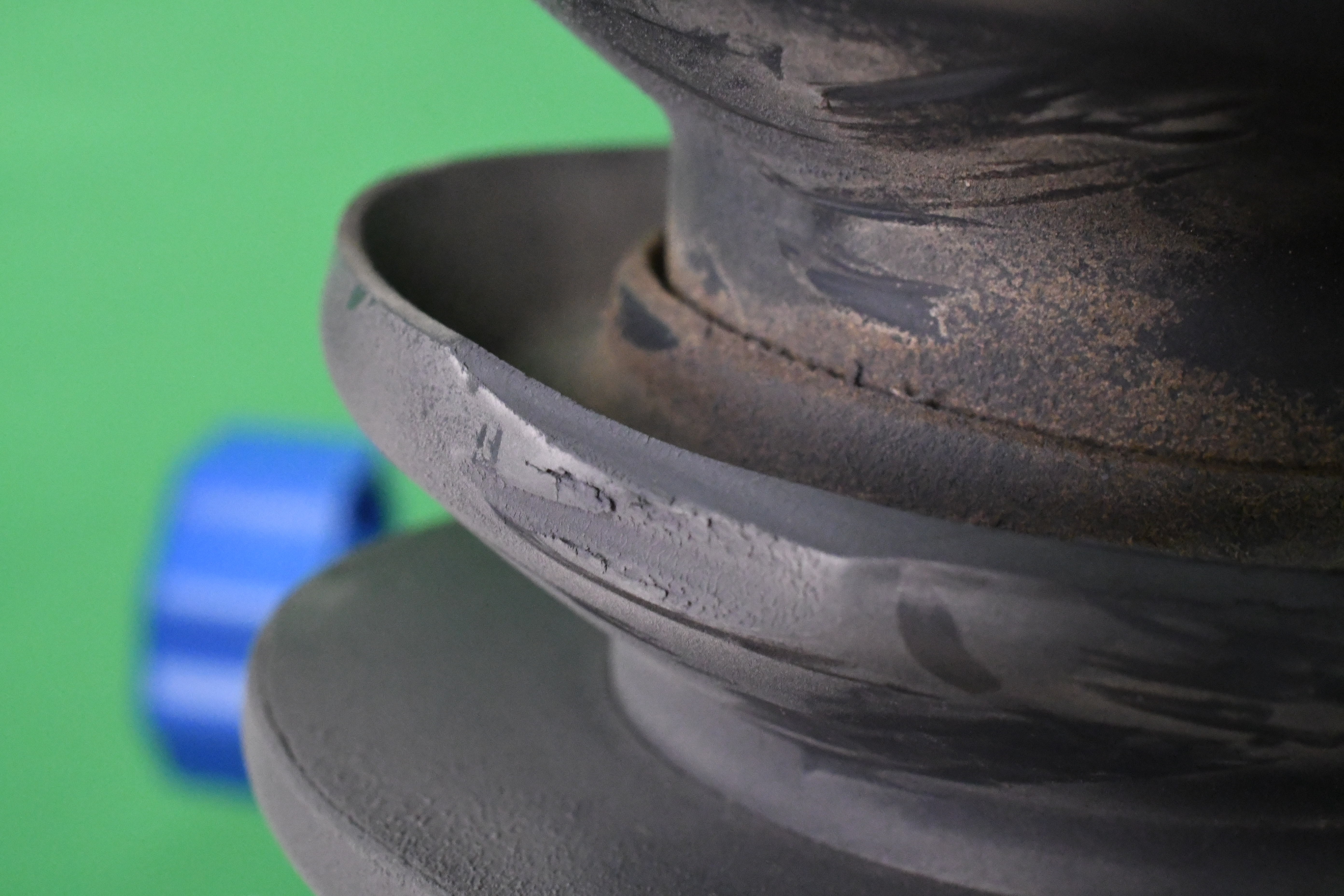
|
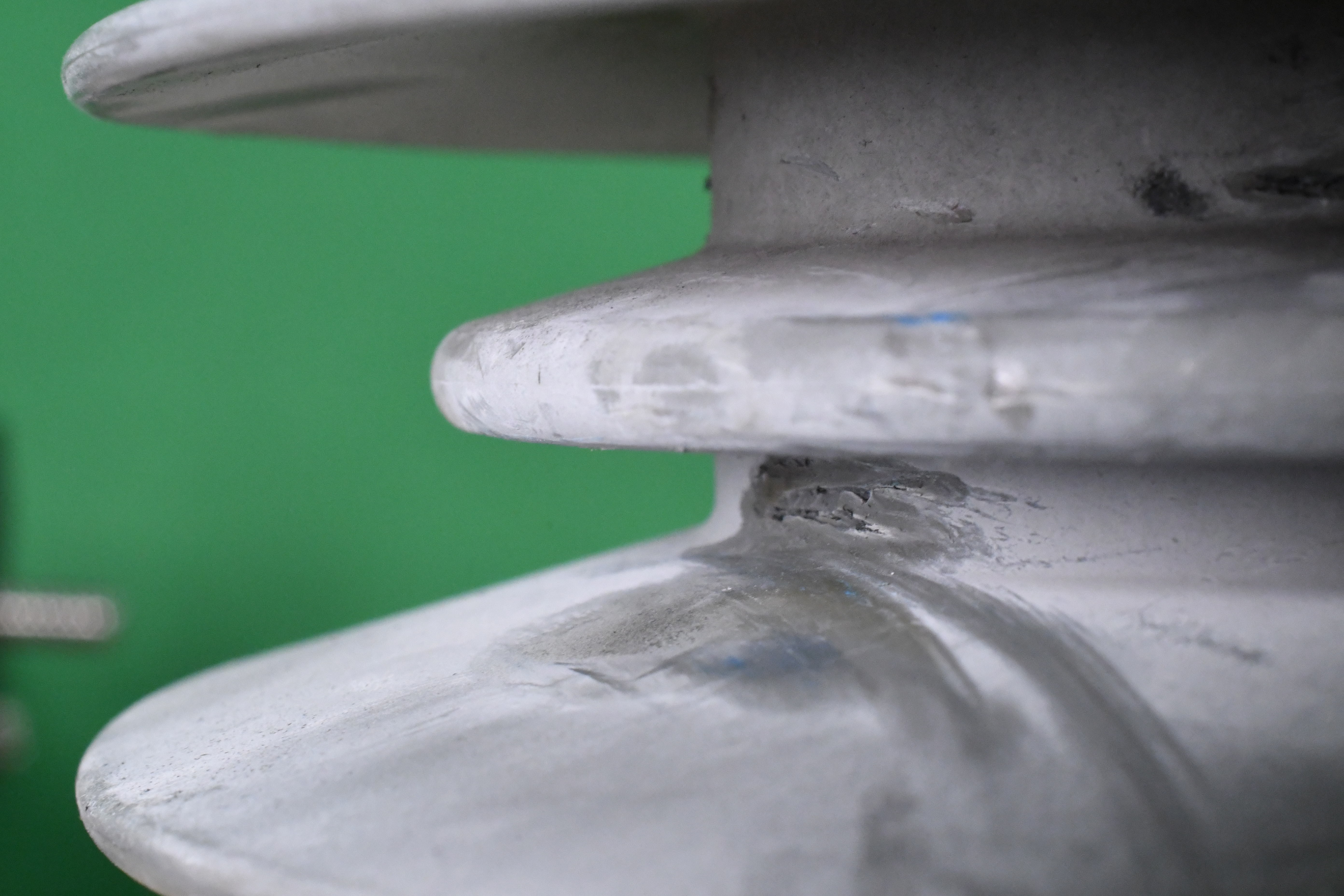
|
Top: damage from the imapact collisions. Bottom: damage from the worst case collisions
Results Table and Downloadable Images
Images of the damage and test can be downloaded here .
Most assets sustained moderate damage. To organize these, we graded the damage on a scale of 1 to 4, where:
1 = minor surface scuffing
2 = up to 1mm deep damage
3 = greater than 1mm deep damage
4 = holes or exposed inner components
The graded damages are summarized in the table below.
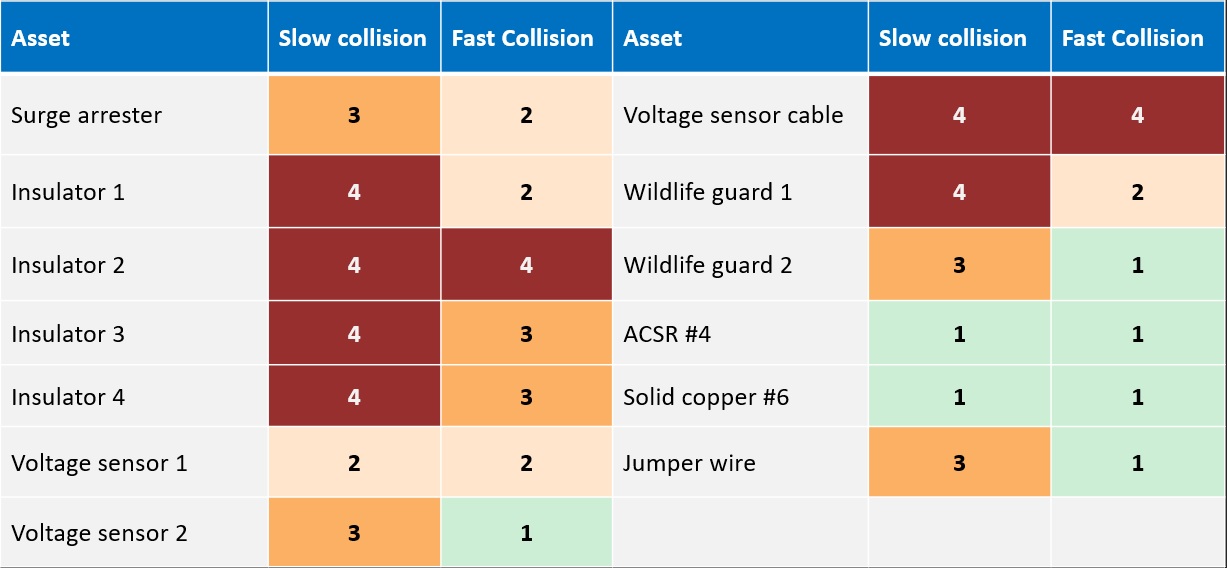
Do you have a particular asset or drone propeller you would like us to test? Please email Dexter Lewis or Lauren Bouchard .